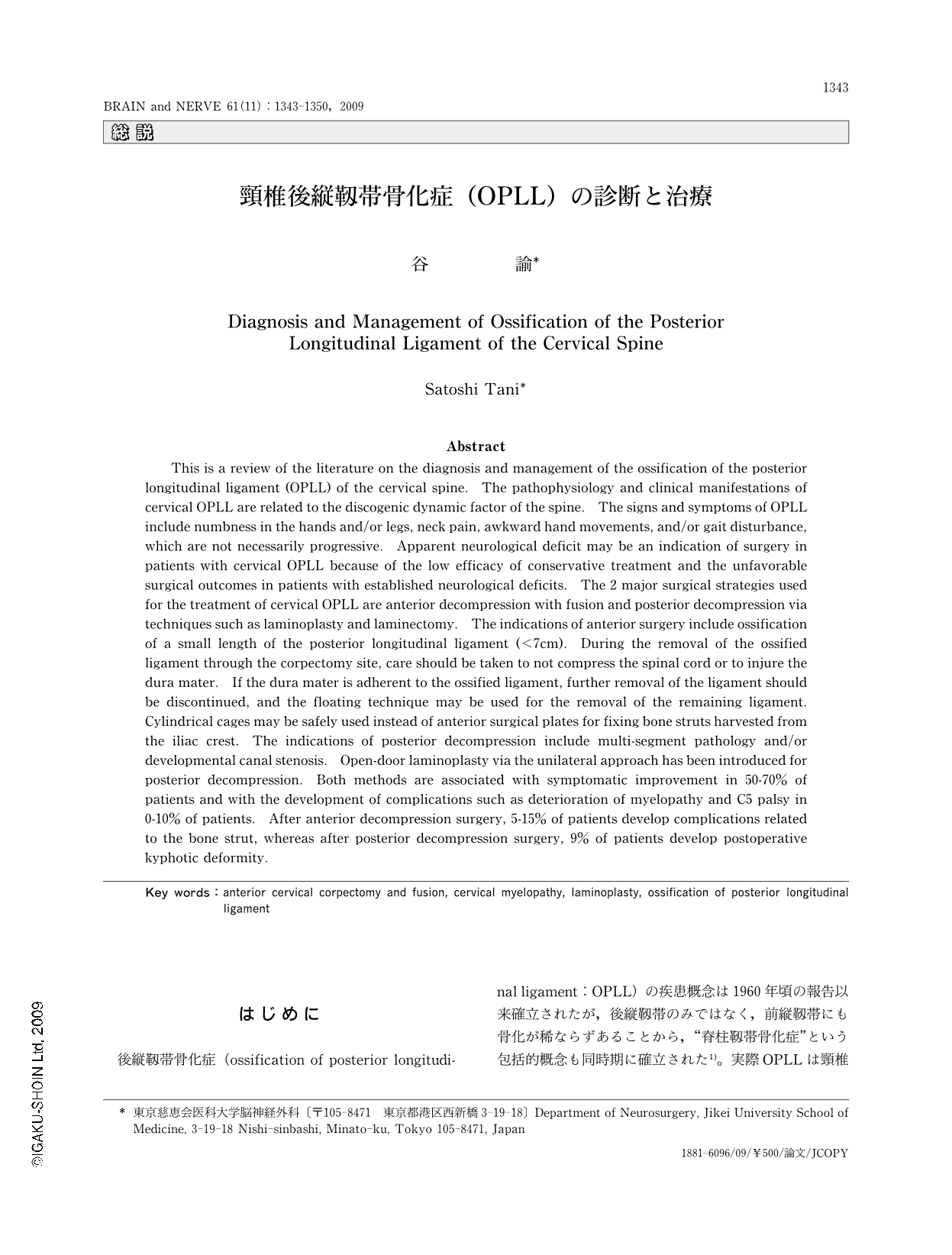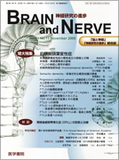Japanese
English
- 有料閲覧
- Abstract 文献概要
- 1ページ目 Look Inside
- 参考文献 Reference
はじめに
後縦靱帯骨化症(ossification of posterior longitudinal ligament:OPLL)の疾患概念は1960年頃の報告以来確立されたが,後縦靱帯のみではなく,前縦靱帯にも骨化が稀ならずあることから,“脊柱靱帯骨化症”という包括的概念も同時期に確立された1)。実際OPLLは頸椎に多くみられること,また,稀にみられる胸椎OPLLでは手術戦略はきわめて多岐にわたり,かつ,一定の評価を得ていないことから,本稿では主に頸椎OPLLについて述べることとする。
Abstract
This is a review of the literature on the diagnosis and management of the ossification of the posterior longitudinal ligament (OPLL) of the cervical spine. The pathophysiology and clinical manifestations of cervical OPLL are related to the discogenic dynamic factor of the spine. The signs and symptoms of OPLL include numbness in the hands and/or legs,neck pain,awkward hand movements,and/or gait disturbance,which are not necessarily progressive. Apparent neurological deficit may be an indication of surgery in patients with cervical OPLL because of the low efficacy of conservative treatment and the unfavorable surgical outcomes in patients with established neurological deficits. The 2 major surgical strategies used for the treatment of cervical OPLL are anterior decompression with fusion and posterior decompression via techniques such as laminoplasty and laminectomy. The indications of anterior surgery include ossification of a small length of the posterior longitudinal ligament (<7cm). During the removal of the ossified ligament through the corpectomy site,care should be taken to not compress the spinal cord or to injure the dura mater. If the dura mater is adherent to the ossified ligament,further removal of the ligament should be discontinued,and the floating technique may be used for the removal of the remaining ligament. Cylindrical cages may be safely used instead of anterior surgical plates for fixing bone struts harvested from the iliac crest. The indications of posterior decompression include multi-segment pathology and/or developmental canal stenosis. Open-door laminoplasty via the unilateral approach has been introduced for posterior decompression. Both methods are associated with symptomatic improvement in 50-70% of patients and with the development of complications such as deterioration of myelopathy and C5 palsy in 0-10% of patients. After anterior decompression surgery,5-15% of patients develop complications related to the bone strut,whereas after posterior decompression surgery,9% of patients develop postoperative kyphotic deformity.

Copyright © 2009, Igaku-Shoin Ltd. All rights reserved.


